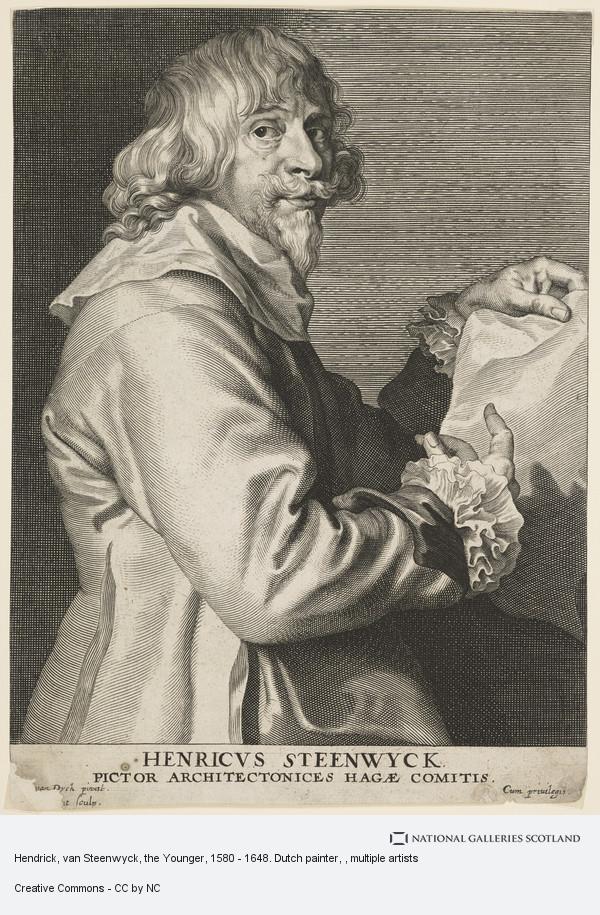Hendrick van Steenwyck the Younger
1580/82–1649
CollaboratorPainter
Hendrick van Steenwyck was born in Antwerp around 1581 as the son of the painter Hendrick van Steenwyck the Elder. His mother was a member of the Valckenborch family of artists and he was raised alongside his Valckenborch cousins. He became a pupil of his father and, after the family settled in Frankfurt, was also influenced by Adam Elsheimer. By 1604, Hendrick II was an established painter but not much is known about where he lived and worked until he arrived at London in 1617. There he married Susanna Gaspoel, who would herself become an artist. The couple remained in London until 1637, when they resettled in the Netherlands. The exact date of Steenwyck’s death is not known but it is likely 1649, the date of his last known painting and the year Susanna was listed as a widow in a public document.
Steenwyck’s early style is similar to that of his father, and he too became known for his architectural interiors. Many of his earlier interiors are based loosely on either Antwerp’s cathedral or its Jesuit church. We do not know the reason for his move to London but art historians have speculated that because his subject matter was so specialized, he continually needed to search for new clients and patrons; thus London’s growing reputation as a center for high art would have appealed to him. Steenwyck had many important British patrons, including the Earl of Arundel, King James, Queen Anne, and Prince Charles, even at a time when aristocratic circles tended to prefer Italian art. In London he worked with Daniel Mytens, Inigo Jones, and Anthony van Dyck; later, he would also work with Theodor van Thulden, Frans Francken II, Cornelis Poelenburgh, and Orazio Gentileschi. He would even work with his own wife Susanna van Steenwyck, nee Gaspoel, and he continued to paint until his death in 1649.
Like his father, Steenwyck had ties to the Brueghel family of artists. It is likely that in 1609 he asked Jan Brueghel the Elder to add figures to a few of his late father’s paintings. In that year, added figures to an Interior of a Gothic Church by the elder Steenwyck before selling the picture to his own patron, Federico Borromeo. Brueghel and the younger Steenwyck went on to collaborate on many more works, Brueghel adding figures into his colleague’s painted church interiors.
By Ximena Valdarrago
